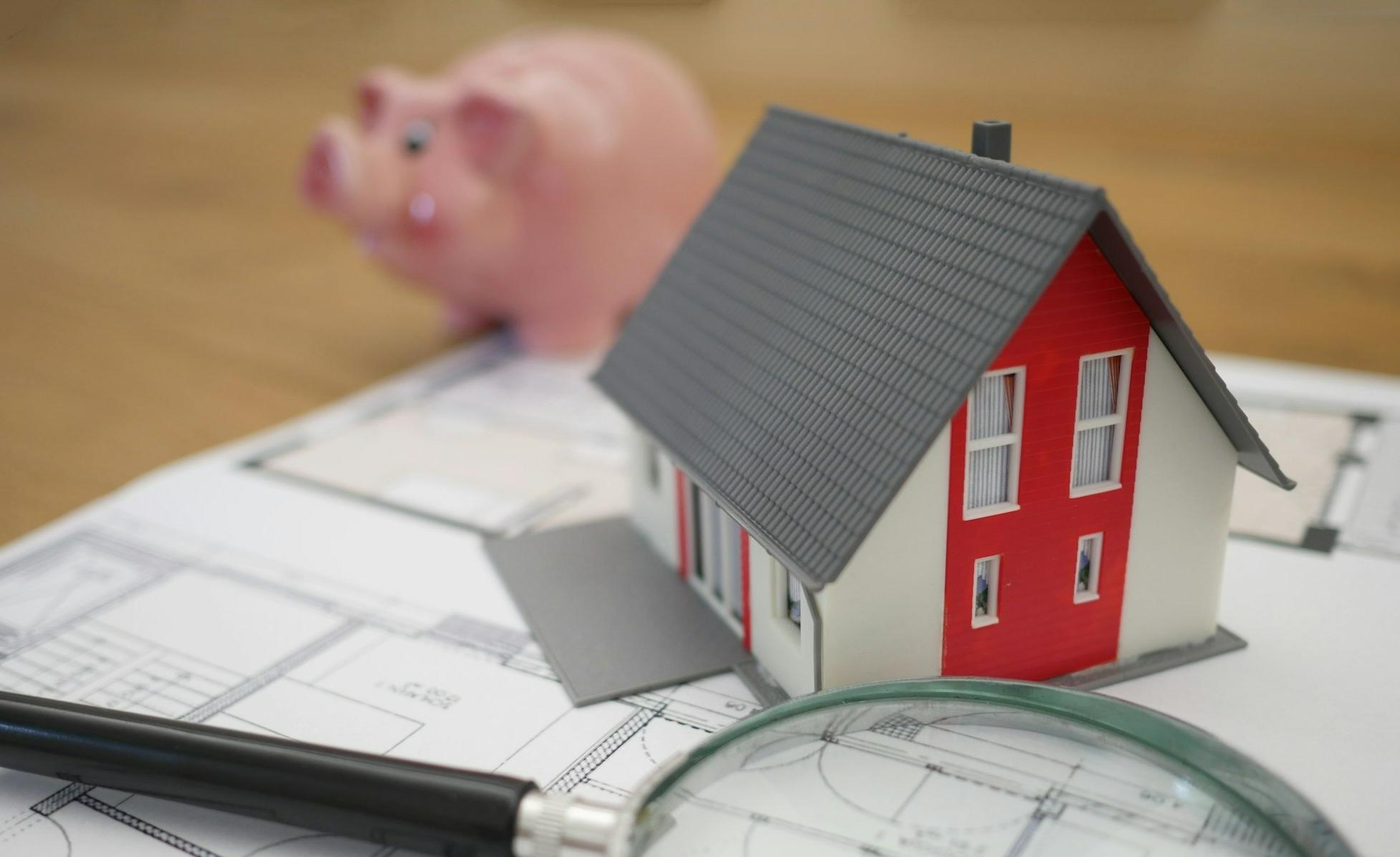Buying a house in 2025 comes with both new opportunities and challenges. The market is evolving, and technology plays a larger role than ever. Whether you’re a first-time buyer or looking to upgrade, knowing where to start and steps to buying a house in today’s market can help you make informed decisions. From navigating interest rates to leveraging online tools, the home-buying process has become more dynamic than ever. To help you get started, we’ve outlined key tips and steps on how to buy a house in 2025. Keep reading to learn the steps to buying your first home successfully.
Step 1: Determine Why You Want to Buy A House
The first step buying home is often about evaluating your current financial situation and understanding what you can afford. Understand whether you’re buying for long-term living, investment, or a growing family. This will guide you to focus on what’s important and avoid regrets later.
Key Actions
- Set personal and financial goals: Consider what you want in a home (location, amenities, down payment).
- Make a list of your priorities: What’s most important to you: location or specific amenities?
- Evaluate your finances: Does buying now fit your budget, or would renting longer help you financially?
- Prepare for home maintenance costs: Be ready for ongoing expenses like repairs and upkeep.
Step 2: Prepare Financially
Getting your finances in order is crucial before diving into what are the steps to buying a house. This will ensure you’re prepared for the process of buying a house and help you determine your budget so you can move quickly once you find the right home.
Saving for Your Down Payment
Saving for a down payment is important to avoid Private Mortgage Insurance (PMI). A 20% down payment or more means no PMI, which lowers your monthly mortgage payment. If your down payment is less than 20%, you’ll pay PMI, which increases your mortgage costs. Some loans allow smaller down payments but come with higher rates and PMI. If you’re a first-time home buyer, you can put down 5-10%, but you’ll have to pay PMI for a longer time. A larger down payment can make your home more affordable over time.
Key Actions
- Research loan requirements: Know exactly how much you need to save for a down payment based on your loan type.
- Down payment gift: If a friend, employer, or relative offers a down payment gift, discuss how much they’ll contribute and get a gift letter in advance.
- Federal loan options: FHA, VA, and USDA loans offer lower down payment requirements (often below 20%).
- Conventional loans: Fannie Mae and Freddie Mac loans require just 3% down.
- Local and state assistance: Look into down payment assistance programs to see if you qualify for loans or grants to reduce costs.
Check Your Credit Score
Your credit score affects the loan options you can get and the rates you’ll pay. Lenders use your credit score to decide if you can get a loan and what interest rate you’ll pay. A higher score leads to better loan terms and lower rates, while a lower score results in higher mortgage costs.
Key Actions
- Get your free credit report and score: Access your free report and score once a year through your bank/credit card company.
- Check for errors: Look for mistakes and request corrections from the credit bureaus.
- Know Your Loan Options: Conventional loans need a credit score of 620+, FHA loans require 580+ with a 10% down payment, and VA/USDA loans don’t have a set credit score but may vary by lender. Always check with a lender for the best option.
- Improve your score: Pay bills on time, reduce debt, and avoid new credit accounts.
- Check your score early: Don’t wait until you’re ready to buy, check your score now.
- Consider waiting: If your credit score is lower than you’d like, consider improving it for better loan options and lower rates.
Create a Housing Budget
A housing budget helps you know what you can afford, avoid overspending, and ensure your finances stay balanced for a stable future.
Key Actions
- Set a budget using the 28/36 rule: Your mortgage should be no more than 28% of your monthly income. Total debt (including mortgage) should not exceed 36%.
- Research home prices and local market trends: Look up average home prices in your area.
- Know about down payments and PMI: Most loans need a down payment. If it’s less than 20%, you’ll pay PMI, which adds to your monthly cost.
- Consider the benefits of a larger down payment: Putting 20% down helps with lower interest rates, no PMI, and immediate equity.
Step 3: Get Mortgage Pre-Approval
When considering how do you buy a house, getting pre-approved for a mortgage is an important step. It helps you understand your budget and shows sellers you’re financially qualified.

Shop for a Mortgage
Shopping for a mortgage helps you find the best interest rates, loan terms, and overall deals. By comparing options, you can save money over the life of the loan.
Key Actions
- Look at different lenders and pick the right loan: Compare options like big banks, online lenders, local banks, and credit unions, and pick the loan type that fits your needs (e.g., FHA or conventional).
- Compare rates and costs, and visit lender websites: Check mortgage rates, fees, and other costs from different lenders online, then speak with loan officers for details.
Get Preapproved for a Mortgage
Pre-approval shows how much you can borrow and proves you’re serious to sellers. It involves sharing your financial details with a lender, who then tells you the loan amount you’re eligible for.
Key Actions
- Gather your documents and expect a credit check: Provide pay stubs, tax returns, and bank statements. The lender will also evaluate your credit score.
- Know the difference between prequalification and pre-approval: Pre-approval needs more paperwork and shows sellers you’re a stronger buyer. Prequalification, on the other hand, is just an estimate based on self-reported info.
- Use your pre-approval: It helps you make home offers by showing how much a lender is willing to lend.
- Track expiry dates: Pre-approval letters last 90 days, so be sure to update them after expiration.
- Get a loan estimate: After pre-approval, ask lenders for a Loan Estimate form to compare rates, fees, and costs efficiently.
Step 4: Find a Real Estate Agent
One of the key steps for first time home buyers is finding a reliable and experienced real estate agent. Hiring a local real estate agent is a smart choice. They know the market, offer valuable guidance, and advocate for your interests through the home buying process. With pre-approval and a clear idea of the type of house you’re looking for, an agent can save you time and money.
Key Actions
- Interview multiple agents & ask for recommendations: Meet with at least three agents and ask friends or family for suggestions.
- Ensure the agent is experienced & check track record: Choose a full-time agent with experience in home buying and a good history in your area.
- Verify communication skills & assess availability: Ensure the agent is responsive (calls, texts, emails) and not too busy to give you attention.
- Negotiate compensation & avoid the listing agent: Understand how the agent gets paid (usually commission by the seller) and avoid using the listing agent for the property you want.
- Discuss their plan for your home search: Ask how the agent plans to help you through the home-buying process.
Step 5: House Hunting
Whether you’re browsing online listings, visiting open houses, or working with a real estate agent, house hunting is all about finding the perfect place to call home.
Key Actions
- Create a priority list & budget: List your must-haves (e.g., number of bedrooms, backyard) and set a budget, separating what you need from what would be nice to have.
- Research locations & evaluate property conditions: Look for neighborhoods with good schools and services. Decide if you’re okay with homes needing repairs or prefer move-in ready ones.
- Visit properties & take notes: Attend open houses, take photos or notes, and compare them to your priorities.
- Consider future resale & work with your agent: Think about whether the home will be easy to sell later and share your needs with your agent to find the right homes.
- Be patient: House hunting can take time, so expect the process to last months.

If you’re looking to buy a house for investment or rental purposes, you can easily research the average rental prices in the area you’re interested in using uhomes.com. The platform offers recommendations for temporary, short-term, and cheap rental properties, covering key areas in various countries and regions. This helps you make a more informed decision about potential rental income and property value.
Step 6: Make an Offer and Negotiate
Once you’ve found your desired home, the next procedure for buying a house is making an offer and negotiating. You may need to negotiate repairs or credits based on the home inspection to ensure everything is in good condition. This is an important step in the steps to purchasing a home, and it sets the foundation for a smooth transaction.
Make an Offer
Your agent will help you determine a fair price based on similar homes nearby.
Key Actions
- Run a CMA (Comparative Market Analysis) and include contingencies: Work with your agent to look at recent home sales and decide which protections (like mortgage, inspection, or home sale contingencies) to include in your offer.
- Offer an earnest money deposit & submit an offer letter: Put down 1% to 3% of the purchase price as earnest money, and consider writing a personal offer letter to show your commitment.
- Prepare for negotiations and act quickly: Be ready for counteroffers and stay flexible to act fast when you find the right home, especially in a competitive market.
Negotiate Repairs and Credits
After the home inspection and appraisal, you may discover necessary repairs. If there are major issues, you can negotiate with the seller to fix them or give you credits to cover the cost. This helps ensure the home is in good condition before you close the deal.
Key Actions
- Review inspection and appraisal reports: Check both reports to find any issues or repairs that must be addressed.
- Request repairs or credits: Ask the seller to fix problems or give you a credit to cover the cost of repairs. If they refuse, you can use the inspection contingency to walk away from the deal.
- Negotiate respectfully: Keep negotiations polite and professional, considering whether it’s a buyer’s or seller’s market, as it can affect your ability to ask for repairs or credits.
- Prepare for counteroffers: Be ready for the seller to make a counteroffer, and work with your agent to reach an agreement that works for you.
Step 7: Finalize Financing
Once you’ve chosen your home, securing your final mortgage approval is the next step. This involves reviewing your financial situation and confirming the loan details before closing.

Key Actions
- Get final loan approval: Provide the necessary documents and work with your lender to complete the final review of your finances.
- Avoid major financial changes: Don’t open new credit accounts, make large purchases, or change jobs during this time, as these could affect your loan approval.
- Work closely with your lender: Regularly communicate with your lender, ensuring all paperwork is submitted on time and correctly.
- Be patient: The approval process may take time. Be patient and await confirmation that everything is set for closing.
Step 8: Do a Final Walk-through and Close on Your House
Before closing, you’ll have a final walk-through of the property to ensure everything is in order. This is your last chance to address any issues before completing the house purchase process.
Key Actions
- Schedule and prepare for the walk-through: Your agent will set up the final walk-through before closing. Bring the home inspection checklist and repair receipts to check if all fixes were made.
- Check for issues: Look for any remaining problems. If you find any, have your agent contact the seller and lender immediately. Closing may be delayed until issues are fixed.
- Review closing disclosure and attend closing: Three days before closing, review the closing disclosure and compare it to your loan estimate. On closing day, sign papers, make payments, and confirm everything before finalizing.
- Receive keys and final documents: After signing, you’ll get the keys, entry codes, and garage openers to your new home, completing the purchase.
Once everything checks out, it’s time to close, marking the end of the step by step buying a house journey and the start of your new life in your home.
Final Wrap-up Steps to Buying a House
If you’re wondering where to start when buying a home, the key steps in how to buy a house begin with preparing financially, saving for a down payment, and checking your credit score. Then, get mortgage pre-approval and work with a real estate agent to find your dream home. Once you make an offer and negotiate repairs, finalize your financing, do a final walk-through, and review the closing disclosure. On closing day, you’ll sign paperwork, make payments, and receive your keys. Following these essential steps to buying a house helps ensure a smooth home-buying experience.
FAQs on Home Buying Process
The key factors for purchasing a home include having a strong credit score, sufficient savings for the down payment and closing expenses, working with an experienced agent, and maintaining a low debt-to-income (DTI) ratio.
Regarding how to buy a house with low income and no credit, consider government programs like FHA, VA, or USDA loans, explore owner financing or co-signers, and save for a larger down payment. You may also qualify for subprime loans, lease-to-own options, or seek professional advice from real estate experts.
When buying a house, avoid overextending your budget, skipping inspections, ignoring hidden costs (like taxes and maintenance), rushing the decision, and falling for emotional decisions. Also, avoid bad loans with high interest rates and make sure to check the neighborhood’s condition and future growth.
The hardest part of buying a house is the search process. It can take anywhere from a few days to several months. Knowing what you’re looking for in advance can help narrow down options and speed up the process, but it still depends on your preferences and budget.
The best months to buy a house are typically in the winter, especially December and January. There are fewer buyers, which can lead to less competition and lower prices. However, there might be fewer homes to choose from, so it’s important to balance timing with available options.
Before buying a house, aim to have at least 20% of the home’s price for a down payment, plus additional savings for closing costs (around 2-5%). It’s also wise to have an emergency fund that is enough for home maintenance and moving expenses.
The home-buying process generally takes about 30 to 60 days, but it can be longer due to financing delays, inspections, or negotiations. The timeline can vary based on market conditions and the deal’s complexity.








